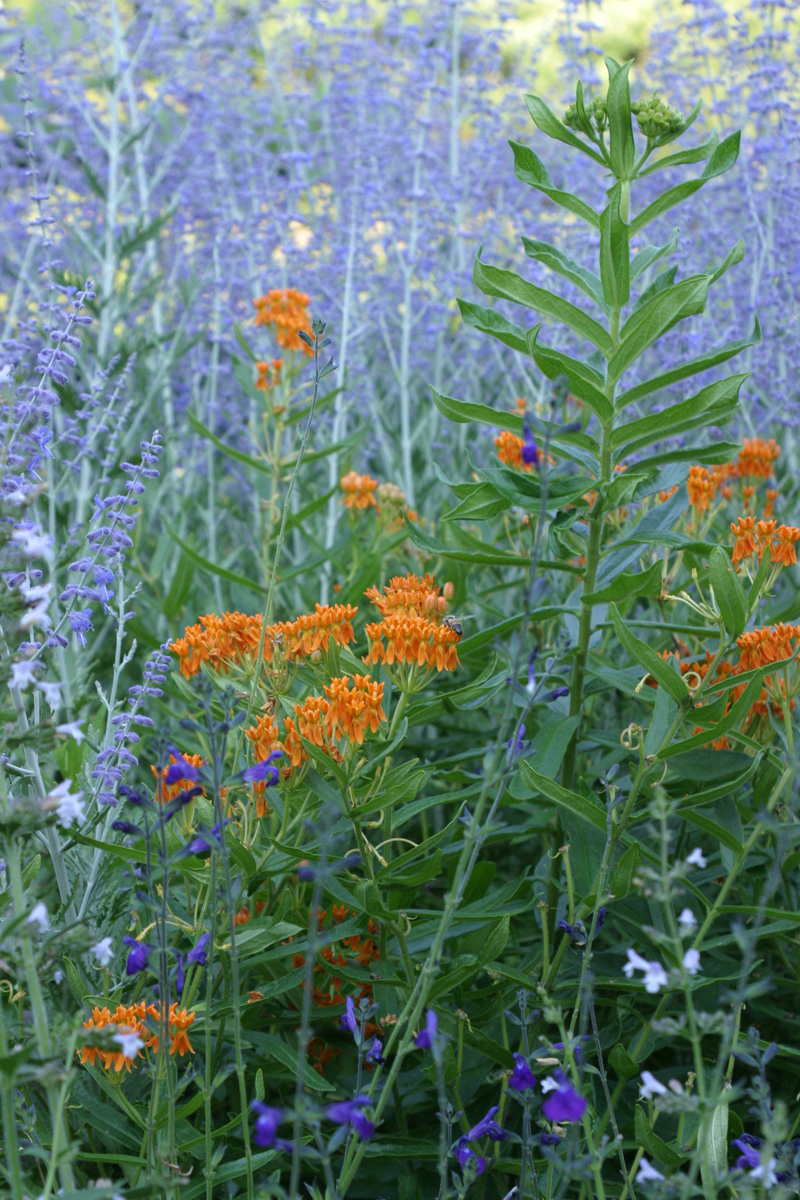
Monarch butterflies are becoming more and more scarce, and it’s up to humans to help them. In the past 30 years, the number of monarchs has decreased by 90%, as has the number of milkweed plants (Asclepias spp. and cvs., Zones 3–9). Milkweed is the only source of food for the monarch caterpillar. The decline in milkweed is mostly due to increased use of pesticides, which affect the number of pollinators, and also weather and deforestation.
Although native, common milkweed (A. syriaca, Zones 3–9) can be grow quite aggressively in the Southwest, which is why milkweeds can have a bad rap here, but there are over a hundred milkweed species native to the United States. Milkweeds are perennial and have a diverse range of heights, colors, and soil preferences, although most prefer full sun. I have several favorite milkweeds that I enjoy growing in my Tucson garden. I enjoy them even more knowing that I’m helping rebuild the monarch population one plant at a time. Here are two milkweed species that you should consider adding to your Southwest garden.
Tropical milkweed is a tender option with bright midsummer blooms

Tropical milkweed (A. curassavica, Zones 8–11) is native in South America, Central America, and Mexico but grows well in the American Southwest. ‘Silky Gold’ tropical milkweed (A. curassavica ‘Silky Gold’, Zones 8–11) is a cultivar that will bring a little bit of sunshine to your garden with its bright yellow blooms. It loves full sun, blooms throughout the summer, and quickly grows 3 to 4 feet tall and 2 to 3 feet wide. This herbaceous perennial is the perfect addition to any meadow area or garden border.
‘Red Butterflies’ tropical milkweed (A. curassavica ‘Red Butterflies’, Zones 8–11) is a show-stopper, with bright red and gold clusters of flowers. It is extremely low maintenance and can handle poor soil. Reaching 2 to 3 feet tall and 1½ to 2 feet wide, it looks especially beautiful in less manicured, wilder garden designs.
Butterfly weed is a more compact option, with vivid orange flowers

Butterfly weed (A. tuberosa, Zones 3–9) is a hardier option, with beautiful bright orange flowers that attract butterflies. This plant produces a lot of nectar. It’s a quick grower but more petite than many other milkweeds, growing to roughly 1 foot tall and 2 feet wide. This low-maintenance milkweed loves full sun and can tolerate drought, especially once established. It can also handle a multitude of different soils and terrains.
Plants that are not just beautiful but also support butterfly population growth are important to have in your garden, especially considering the sharp decline of monarch populations over the years. So if you plant one new plant this year, make it a milkweed. For more native milkweed options, check out Grow Native Milkweeds to Bring Pollinators to Your Garden.
—Laurel Startzel is an interior designer and container garden designer. She is a former co-owner of Denver Dirty Girls, a container gardening business, and lives in Tucson, Arizona.
Fine Gardening Recommended Products

Planting in a Post-Wild World: Designing Plant Communities for Resilient Landscapes
Fine Gardening receives a commission for items purchased through links on this site, including Amazon Associates and other affiliate advertising programs.

Organo Republic 16 Perennial Wildflower Seeds Mix for Indoor & Outdoors
Fine Gardening receives a commission for items purchased through links on this site, including Amazon Associates and other affiliate advertising programs.

The Nature of Oaks: The Rich Ecology of Our Most Essential Native Trees
Fine Gardening receives a commission for items purchased through links on this site, including Amazon Associates and other affiliate advertising programs.



















Comments
Log in or create an account to post a comment.
Sign up Log in